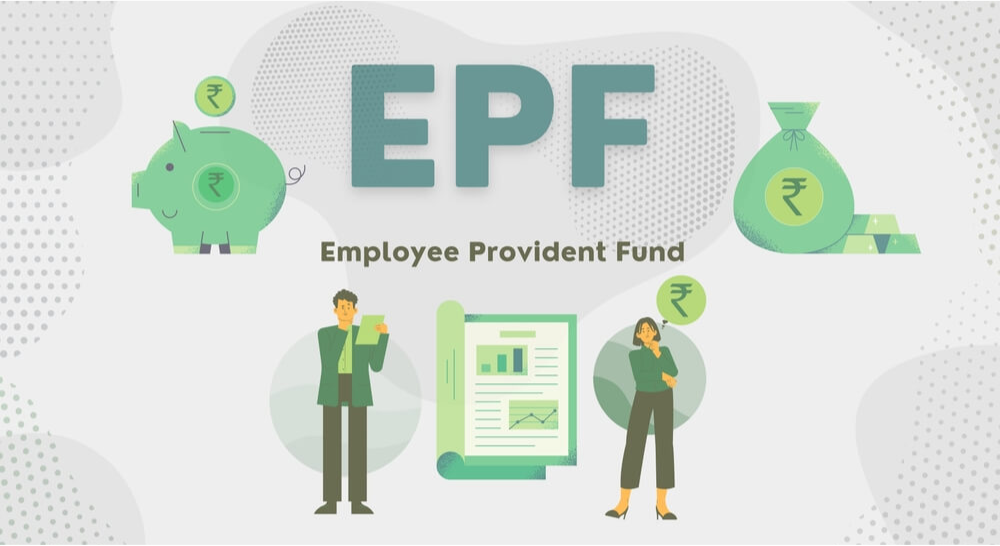 Last updated: December 9th, 2024 3:11 PM
Last updated: December 9th, 2024 3:11 PM
Intimation under Section 143(1) - ITR Intimation Password & Response
All persons with taxable income must file a tax return each financial year. After the ITR filing, the income tax department would process the return, check for errors, and issue intimation under section 143(1) of Income Tax Act. An intimation under Section 143(1) summarizes the Income tax Department's assessment of your ITR, including income, tax liability, and any refund or tax demand. On receiving any income tax notice, the taxpayer, without panicking, can take steps to understand the tax notice and comply with the request of the tax officer. This article looks at income tax notice u/s Section 143(1) of income tax act and ITR intimation password in detail.What is Intimation under Section 143(1) of Income Tax Act?
An intimation under Section 143(1) of Income Tax Act is a communication sent by the Income Tax Department (ITD) after processing your Income Tax Return (ITR) filing. It essentially acts as a summary of the ITD's assessment of your tax liability. This ITR intimation details the income you declared, compares it with information received from third parties, and presents the calculated tax amount. It also highlights any discrepancies, specifies any tax demand or refund you're entitled to, and includes a processing code indicating the outcome of your ITR processing.What Does an ITR Intimation Contain?
Your ITR intimation under 143(1) of income tax act acts as a summary of the details you filed and the ITD's evaluation. Here's a breakdown of the key information you'll find:- Assessee Details: This section confirms your basic information like name, Permanent Account Number (PAN), and Assessment Year (AY).
- ITR Filing Details: It details your acknowledgement number, filing date, and chosen ITR form type.
- Income Details: This section compares the income figures you declared with any information the ITD may have received from third parties, such as employers, banks, or investment sources.
- Tax Calculation: It presents the tax liability as per your calculations and the ITD's assessment, highlighting any discrepancies.
- Demand and Refund: The intimation specifies any tax demand you need to pay or confirms the amount of tax refund you're entitled to receive.
- Processing Code: This code indicates the outcome of your ITR processing. Common processing codes include "143" (intimation issued with no changes), "143(1)(a)" (demand for additional tax), and "143(1)(b)" (intimation of tax refund).
Why Intimation under Section 143(1) of Income Tax Act is issued?
An income tax notice under Section 143(1) of Income Tax Act will be issued in any of the following scenarios after automated verification of the tax return filed:- Any arithmetical error in the return;
- An incorrect claim, if such claim is wrong in the tax return filed;
- Disallowance of loss claimed if the return of the previous year for which set off of loss is claimed was furnished beyond the due date for filing an income tax return;
- Disallowance of expenditure indicated in the audit report but not taken into account in computing the total income in return (applicable from AY2017-18);
- Disallowance of deduction claimed under Section 10AA, 80-IA, 80-IAB, 80-IC, 80-ID, or 80-IE, if the return is furnished beyond the due date specified under Section 139(1).
- Addition of income appearing in Form 26AS or Form 16 which has not been included in computing the total income in the return;
- Information with is inconsistent with another entry of the same or some other return;
- Information required to substantiate an entry which has not been provided, like donation information;
- If any deduction exceeds the statutory limit allowed,
When Intimation under Section 143(1) Tax Notice is Issued?
You'll receive this intimation in various scenarios, depending on the outcome of your ITR assessment:- Tax Refund with Adjustments: If the ITD determines you're entitled to a tax refund but has made certain adjustments to your return during processing, you'll receive an intimation under Section 143(1) of Income Tax Act outlining the revised tax calculation, the final refund amount, and details of any changes made.
- Demand for Additional Tax or Interest: In cases where the ITD calculates a higher tax liability than you declared or identifies additional interest payable, you'll receive an intimation under Section 143(1) of Income Tax Act specifying the revised tax amount, the reason for the demand, and any applicable interest charges.
- Return Processed with No Change: Even if there's no change to your declared tax liability, resulting in neither a demand nor a refund, you'll still receive an intimation under Section 143(1) confirming that ITD has processed your return and accepted the information you provided. This serves as an official acknowledgement of your ITR filing.
Time Limit
Assessment under section 143(1) of Income Tax Act can be made within one year from the end of the financial year in which the income return is filed. Thus, the intimation for tax or interest due under Section 143(1) should not be sent after the expiry of one year from the end of the financial year in which the return is filed.How is the ITR intimation received?
The Income Tax department in India will send you your ITR intimation electronically after processing your tax return. There are two main ways you'll receive it:- Email: The intimation will be sent to the registered email address that you provided while filing the return or registering on the income tax e-filing portal. The sender will be the Central Processing Centre (CPC) with the email ID intimations@cpc.incometax.gov.in.
- SMS: You may also get an SMS alert on your registered mobile number informing you that the intimation has been sent to your email.
What is the ITR intimation password?
The file you downloaded is password-protected to ensure your privacy. "To open your ITR intimation notice under Section 143(1), the password is a combination of your PAN (in lowercase letters) and your date of birth in DDMMYYYY format, without any spaces or special characters." For example, if your PAN is ABCDE1234E and your date of birth is January 1st, 2000, the password to access the document would be "abcde1234e01012000".How to read the received intimation tax notice under Section 143(1)?
The ITR intimation notice under Section 143(1) of Income Tax Act can seem complex at first glance, but it's essentially a summary of your tax return compared to the Income Tax department's assessment. Here's a breakdown of how to read it: 1. Verify Basic Details:- Confirm that the name, address, PAN number, and assessment year mentioned in the notice are correct.
- Check the e-filing acknowledgement number matches the one you received when filing your return.
- The income you declared in your return.
- The income as per the department's records.
- If there are any discrepancies, investigate the reason. It could be a mistake you made or information the department has that you don't.
- Tax rate applicable to your income slab.
- Any tax reliefs or pre-paid taxes considered.
- Interest or penalties (if any) levied by the department.
- Ensure you understand each element contributing to your final tax liability.
- The intimation will state whether you are entitled to a tax refund or owe tax to the department.
- If there are discrepancies or you need to pay additional tax, you may have to file a revised return within a specific timeframe.
- If you're due a refund, the intimation will provide details on the processing timeline.
How to Respond to Income Tax Notice under Section 143(1)?
To respond to an income tax notice under Section 143(1) of Income Tax Act, follow the steps below: Step 1: Log in to your account on the Income Tax Department E-Filing website. Step 2: Click on the E-Proceedings tab and select E-Assessment/Proceedings. Step 3: Select Prima Facie Adjustment u/s 143(1)(a). Step 4: You will see the details of the notice received. Click on Submit to submit the response. Step 5: You will now see the list of all mismatches identified. Click the drop-down next to the Response to submit a response to the mismatch. Step 6: Enter the same in the justification or remarks if you have any specific information or explanation. Step 7: Submit any supporting documents regarding the discrepancy amounts before submitting your response. Step 8: Click on “Submit”. Once the response is submitted, an acknowledgement will be provided.In case you have received an income tax notice, get in touch with a Tax Expert from IndiaFilings at sales@indiafilings.com for assistance.
Popular Post

In the digital age, the convenience of accessing important documents online has become a necessity...

The Atalji Janasnehi Kendra Project that has been launched by the Government of Karnataka...

The Indian Divorce Act governs divorce among the Christian couples in India. Divorce...

When an individual has more than a single PAN card, it may lead to that person being heavily penalised, or worse,...

Employees Provident Fund (PF) is social security and savings scheme for employee in India. Employers engaged...


